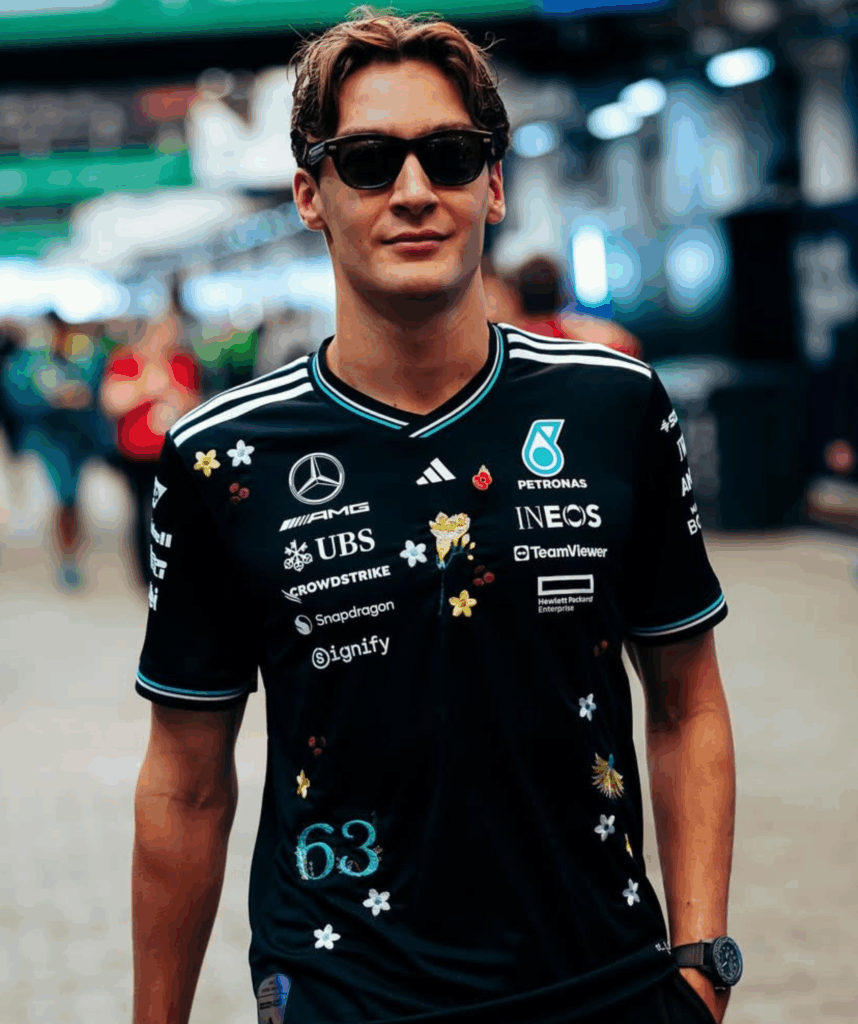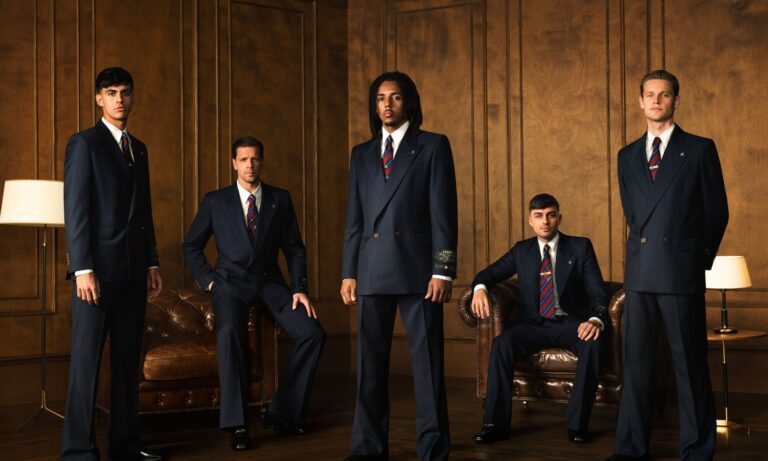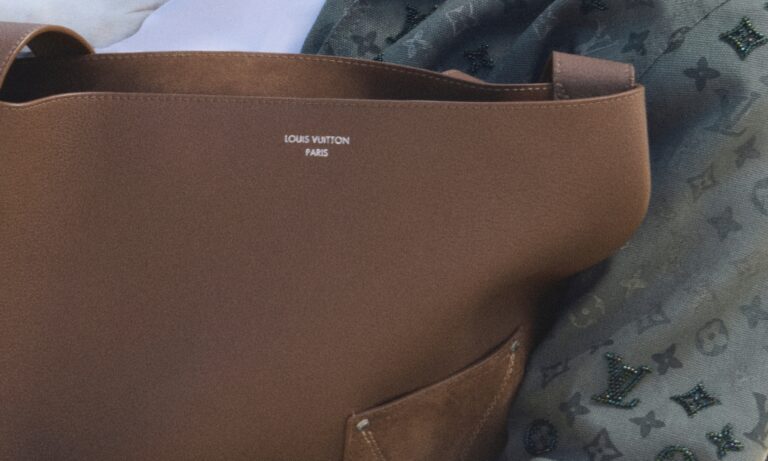For those of you who were glued to the action-packed Sâo Paulo Grand Prix last weekend might have noticed something slightly different in the Mercedes garage…or should we say on the drivers. While many drivers and cars sported special jerseys, hats, and liveries to mark the Brazilian round, inside the Mercedes garage, George Russell and Kimi Antonelli debuted team jerseys that quietly made a loud statement. Woven into the fabric of Russell & Antonelli’s limited-edition jerseys were fine, floral embroideries. It hinted that someone with a very particular eye had been invited into the fast-paced Formula 1 world to weave storytelling, symbolism, and craft into the paddock.

That someone was Diana Al Shammari, an Iraqi embroiderer whose work has quietly shifted how sport and craftsmanship intersect. Diana Al Shammari has built a global following by transforming football jerseys into objects of culture and identity. To her 164,000 Instagram followers (and counting), she is known as The Football Gal. Her latest collaboration, created with adidas Motorsport and the Mercedes-AMG Petronas Formula 1 Team, extends that vision to the grid.
Her pieces usually work in two directions at once. They honor a club, a country, a flag. They also insist on individuality inside that collective. Flowers from national folklore. Motifs from local landscapes. Gold thread. Careful placement. A shirt can be fierce and soft at once. That has always been her argument. It is why athletes want to wear her work. It is why luxury audiences who like craft and story respond to her.

The embroidery for the Mercedes F1 team told a story rooted in Brazil. Golden trumpet flowers, açai berries, mangaba blossoms, and coconut palms — all native to the country — were delicately stitched across the jerseys in subtle tonal threads, creating depth without disrupting the team’s signature palette. The embroidery held deeper meaning beyond the aesthetics. The golden trumpet, Brazil’s national flower, symbolized endurance, a quality as essential on the track. The açaí berry stood for vitality, echoing the stamina and focus demanded of every driver through the grueling laps of a Grand Prix. The palm represented resilience, a quiet nod to the persistence that defines not just champions but the sport itself. Even the drivers’ numbers were given subtle embellishments, each surrounded by fine botanical motifs that traced the curves of the circuit.

While Al Shammari’s work carries its own weight, her journey has been anything but easy. Al Shammari was seven when her family left Baghdad during the invasion. They left with suitcases and fear and no idea what came next. Cairo came next. Then Los Angeles. Then London. Football became the one thing that did not change. She wrote about it in school. She painted her favourite players. She used it to make sense of a life that kept moving in unpredictable directions. It was in 2017 that she picked up a needle because a Hungarian national team shirt looked too plain and she wanted to make it hers. That small act of customization would quietly alter the course of her life.
What began as a personal experiment soon caught attention online. Her early designs — vintage football shirts transformed with intricate floral embroidery — resonated far beyond fan culture. Within months, she had built a loyal following under the moniker The Football Gal, her work circulating across social media and finding its way into the wardrobes of players and collectors alike.
Her signature lies in her ability to balance strength and delicacy. The shirts she reworks hold recognizable masculine silhouettes that are softened with intricate, often floral, detailing that speaks to individuality within uniformity. Her collaborations with adidas Football and Supreme have sold out in minutes; her designs have been worn by players like Pau Cubarsí and Alessia Russo, and even by Joe Jonas on tour.
Diana Al Shammari’s presence in the paddock signals something larger about where motorsport is headed. Once defined almost entirely by machinery and masculine precision, the sport is slowly widening its lens, allowing space for creativity, collaboration, and nuance. Her embroidery, with its quiet complexity, challenges the idea that delicacy and dominance are at odds. It suggests that detail can carry power.
ALSO READ: 7 GRIPPING MOVIES & TV SHOWS THAT WILL MAKE YOU STOP SCROLLING & START STREAMING.




